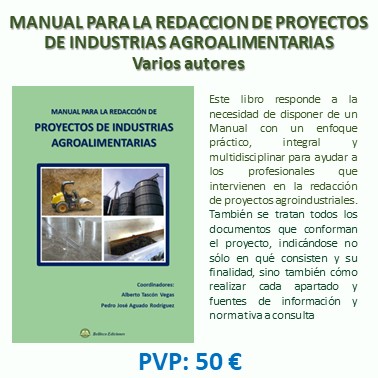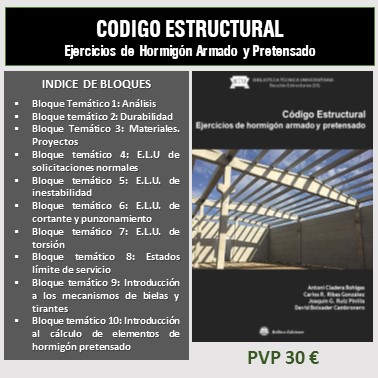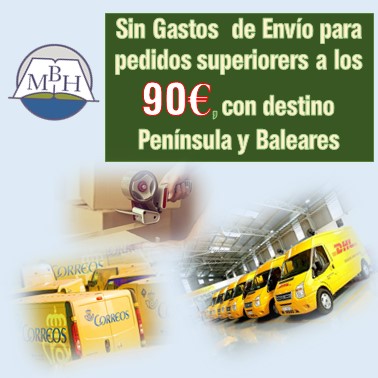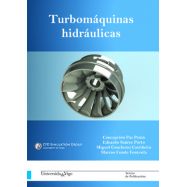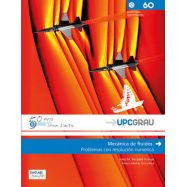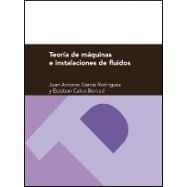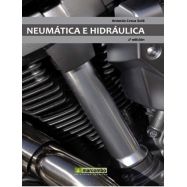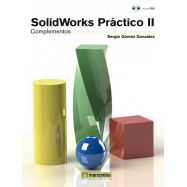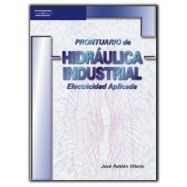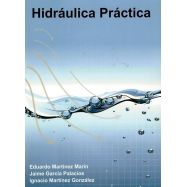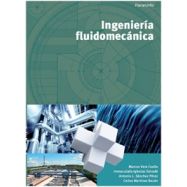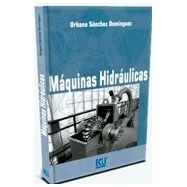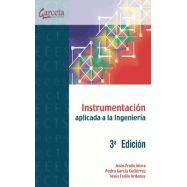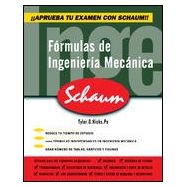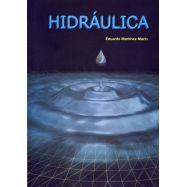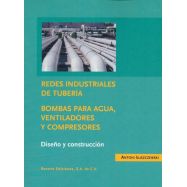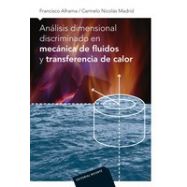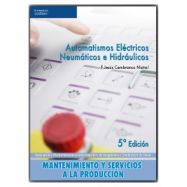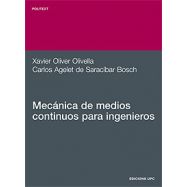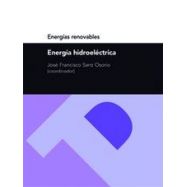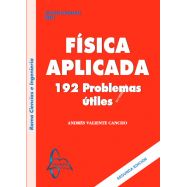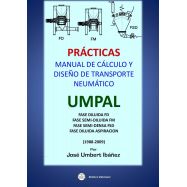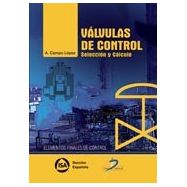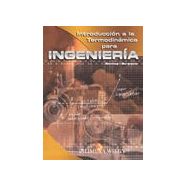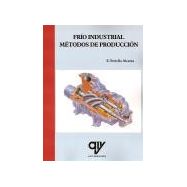Ningún producto
Materias
- BELLISCO EDICIONES. Nuestro Fondo Editorial
- FONDOS EDITORIALES EN DISTRIBUCION
- LIBROS TECNICOS EN INGLES
- ARQUITECTURA - URBANISMO
- AUTOMOCION - MOTORES - VEHICULOS
- AVIONICA - AERONAUTICA
- CALIDAD - EMPRESARIALES - GESTION
- CIENCIAS EXACTAS - MATEMATICAS
- CIENCIAS NATURALES Y APLICADAS
- CIENCIAS DE LA TIERRA - INGENIERIA DEL SUELO
- DICCIONARIOS TECNICOS
- ESTRUCTURAS - CONSTRUCCION
- FORMACION PROFESIONAL
- HIDRAULICA - INGENIERIA SANITARIA - AGUAS
- Abastecimiento y Distribución
- Águas subterráneas
- Tratamiento. Depuración y Reutilización de aguas
- Tuberías - Conducciones - Válvulas - Depósitos
- Mecanica de Fluidos
- Aguas, hidráulica e Ingª Sanitaria en General
- Novedades en Ingª Sanitaria, aguas, Hidráulica
- Hidrologia, Hidraulica Fluvial, Rios, cuencas y sedimentos
-
- INGENIERIA CIVIL - OBRAS PUBLICAS
- INGENIERIA MECANICA E INDUSTRIAL
- INSTALACIONES . GENERALES, EN EDIFICACION E INDUSTRIALES
- MATERIALES
- MEDIO AMBIENTE
- NORMATIVA
- OPOSICIONES
- PREVENCION DE RIESGOS LABORALES
- PROGRAMAS INFORMATICOS DE CALCULO
- TECNOLOGIA DE LOS ALIMENTOS: Industrias: Conservación, envasado y cadenas alimentarias
- TELECOMUNICACIONES - INFORMATICA - TECNOLOGIA DE LA INFORMACION
- OUTLET DE BELLISCO: Descuentos de hasta el 80%
- RELIGION, TEOLOGIA, MORAL Y ESPIRITUALIDAD
- VARIOS
- OFERTAS
- PROMOCIONES
- NEWSLETTER
- CATEGORIAS DESTACADAS
- ULTIMAS NOVEDADES BELLISCO
- ARQUITECTURA SOSTENBILE
- URBANISNO
- MATEMATICAS EN GENERAL
- AGRONOMOS-AGRICULTURA-FORESTALES
- ELECTROMAGENTISMO-ELECTRONICA-ELECTRICIDAD
- INGª Y MECÁNICA DEL SUELO. CIMENTACIONES
- TOPOGRAFIA, FOTOGRAMETRÍA, GEODESIA
- EDIFICACION
- ANALISIS DE ESTRUCTURAS, RESISTENCIA DE MATERIALES, ELASTICIDAD, CALCULO MATRICIAL
- OFICIOS VARIOS
- ABASTECIMIENTO Y DISTRIBUCION DE AGUA
- PUENTES
- TUNELES Y OBRAS SUBTERRANEAS
- MAQUINAS Y MECANISMOS
- SOLDADURA
- CLIMATIZACION
- INSTALACIONES DE AGUA
- INSTALACIONES ELECTRICAS CIENCIA E INGENIERIA DE MATERIALES
- ENERGIAS RENOVABLES
- DESARROLLO SOSTENIBLE
- INFORMATICA-SISTEMAS-FORMACION-PROGRAMAS
-
FLUID MECHANICS AND TURBOMACHINERY. Problems and Solutions
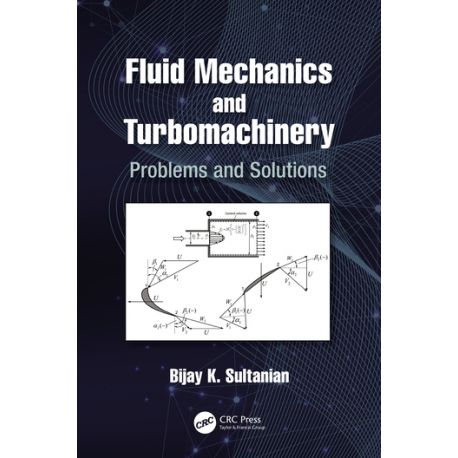 Ver más grande
Ver más grande Referencia: Código 09404
Julio de 2021 - Bijay K Sultanian - Refª 9404
Bijay K Sultanian
Julio de 2021 Páginas: 430
Código 9404 ISBN/EAN: 9780367514747
Book Description
Reflecting the author’s years of industry and teaching experience, Fluid Mechanics and Turbomachinery features many innovative problems and their systematically worked solutions. To understand fundamental concepts and various conservation laws of fluid mechanics is one thing, but applying them to solve practical problems is another challenge. The book covers various topics in fluid mechanics, turbomachinery flowpath design, and internal cooling and sealing flows around rotors and stators of gas turbines.
As an ideal source of numerous practice problems with detailed solutions, the book will be helpful to senior-undergraduate and graduate students, teaching faculty, and researchers engaged in many branches of fluid mechanics. It will also help practicing thermal and fluid design engineers maintain and reinforce their problem-solving skills, including primary validation of their physics-based design tools.
Table of Contents
Preface Acknowledgements About the Author 1.Fluid Flow Kinematics and Key Concepts Review of Key Concepts Problem 1.1: Streamline in a Three-Dimensional Steady Incompressible Flow Solution for Problem 1.1 Problem 1.2: Streamline in a Three-Dimensional Steady Flow with Variable Density Solution for Problem 1.2 Problem 1.3: Velocity Distribution from Measurements Solution for Problem 1.3 Problem 1.4: Local Convective Acceleration in a Conical Diffuser Solution for Problem 1.4 Problem 1.5: Convective Acceleration and Rotation Vectors in an Unsteady Three-Dimensional Flow Solution for Problem 1.5 Problem 1.6: Circulation in a Free Vortex, a Forced Vortex, and a Rankine Vortex Solution for Problem 1.6 Problem 1.7: Circulation around a Square Arbitrarily Located in a Forced Vortex Solution for Problem 1.7 Problem 1.8: Circulation around a Square Arbitrarily Located in a Free Vortex Solution for Problem 1.8 Problem 1.9: Incompressible Flow through a Manifold with Two Inlets and One Outlet Solution for Problem 1.9 References Bibliography Nomenclature Chapter 2.Control Volume Analysis Review of Key Concepts Problem 2.1: Maximum Water Level in a Tank with Inflow and Outflow Solution for Problem 2.1 Problem 2.2: Force of a Jet Impinging on a Flat Plat Solution for Problem 2.2 Problem 2.3: Thrust Produced by a Firehose Nozzle Solution for Problem 2.3 Problem 2.4: Force on a Wooden Log of Square Cross-Section in a Two-Dimensional Flow Solution for Problem 2.4 Problem 2.5: Mixing of Two Incompressible Turbulent Flows in an Ejector Solution for Problem 2.5 Problem 2.6: Dad’s Garden Hose Dilemma Solution for Problem 2.6 Problem 2.7: Restraining Force on Carts with One Inlet and One Outlet Solution for Problem 2.7 Problem 2.8: Force Needed to Hold a Water Tank in Position under the Given Inflow and Outflow Conditions Solution for Problem 2.8 Problem 2.9: Effective Average Moody Friction Factor for an Annulus Flow with Different Relative Roughness on Inner and Outer Walls Solution for Problem 2.9 Problem 2.10: Laminar Flow Entering a Sudden Pipe Expansion Solution for Problem 2.10 Problem 2.11: An Accelerating Cart with a Constant OutflowSolution for Problem 2.11 Problem 2.12: An Accelerating Cart under a Deflected Water Jet Solution for Problem 2.12 Problem 2.13: An Accelerating Cart with Variable Outflow Solution for Problem 2.13 Problem 2.14: A Water Tanker Accelerating Due to an Incoming Water Jet Solution for Problem 2.14 Problem 2.15: A Lawn Sprinkler with Two Unequal Arms Solution for Problem 2.15 Problem 2.16: Convective Heat Transfer and Internal Heat Generation in a Pipe Flow with Constant Wall Temperature Solution for Problem 2.16 References Bibliography Nomenclature 3.Bernoulli Equation: Mechanical Energy Equation Review of Key Concepts Problem 3.1: Free Fall of Steady Water Flow under Gravity from a Vertical Pipe Solution for Problem 3.1 Problem 3.2: Open Channel Water Flow as a Flow Measuring Device Solution for Problem 3.2 Problem 3.3: Water Flow in a Variable-Area Frictionless Duct Solution for Problem 3.3 Problem 3.4: Operation of a Siphon Solution for Problem 3.4 Problem 3.5: Head Loss and Static Pressure Loss in a Subsonic Air Flow through a Constant-Area Duct Solution for Problem 3.5 Problem 3.6: Pumping Power Needed in a Water Flow System Solution for Problem 3.6 Problem 3.7: Minimum Pressure in a Siphon Tube Solution for Problem 3.7 Problem 3.8: Venturi Flow Meter Analysis Solution for Problem 3.8 Problem 3.9: Tuning of the Carburetor in Tom’s Old Scooter Solution for Problem 3.9 Problem 3.10: An Ejector Pump Analysis Solution for Problem 3.10 Problem 3.11: Head Loss in a Diverging Duct Flow Solution for Problem 3.11 Problem 3.12: Pump Discharge and Power in a Flow System Solution for Problem 3.12 References Bibliography Nomenclature 4.Compressible Flow Review of Key Concepts Problem 4.1: Force on an Air Compressor Operating in a Constant-Area Duct Solution for Problem 4.1 Problem 4.2: Choking in a Compressed Air flow System Solution for Problem 4.2 Problem 4.3: Adiabatic Air Flow Through Two Convergent Nozzles and One Divergent Nozzle Connected to a Plenum Solution for Problem 4.3 Problem 4.4: Air Flow Rate through a Punched Automobile Tire Solution for Problem 4.4 Problem 4.5: Isentropic Air Flow through a Deformable Rubber Pipe Solution for Problem 4.5 Problem 4.6: Locating the Normal Shock in a Convergent-Divergent Nozzle Solution for Problem 4.6 Problem 4.7: High-Pressure Inlet Bleed Heat (IBH) System of a Land-Based Gas Turbine for Power Generation Solution for Problem 4.7 Problem 4.8: A Convergent-Divergent Nozzle Air Flow with a Normal Shock Solution for Problem 4.8 Problem 4.9: Finding Total-Pressure Mass Flow Functions from Isentropic Flow Table Solution for Problem 4.9 Problem 4.10: Prandtl-Meyer Equation Versus Normal Shock Function Solution for Problem 4.10 Problem 4.11: Normal Shock Analysis Using Fanno and Rayleigh Flow Lines Solution for Problem 4.11 Problem 4.12: Maximum Length of a Fanno Flow Pipe to Deliver the Specified Mass Flow Rate Solution for Problem 4.12 Problem 4.13: Fanno Flow through a Long Pipe Solution for Problem 4.13 Problem 4.14: Normal Shock in a Convergent Divergent Nozzle Attached to a Fanno Pipe Solution for Problem 4.14 Problem 4.15: Normal Shock in a Converging Diverging Nozzle Attached to a Short Converging Duct Solution for Problem 4.15 Problem 4.16: Supersonic Flow Over a Wedge with Oblique and Bow Shocks Solution for Problem 4.16 Problem 4.17: Supersonic Air Flow over a Wedge with Measured Wave Angle Solution for Problem 4.17 Problem 4.18: Supersonic Air Flow Over a Wedge with Measured Pressure Ratio Solution for Problem 4.18 Problem 4.19: A Convergent-Divergent Nozzle Flow with a Normal Shock at Its Exit Solution for Problem 4.19 Problem 4.20: A Convergent-Divergent Nozzle Flow with an Oblique Shock at Its Exit Solution for Problem 4.20 Problem 4.21: A Convergent-Divergent Nozzle Flow with Prandtl-Meyer Expansion at Its Exit Solution for Problem 4.21 Problem 4.22: Gas Turbine Thrust on Engine Mountings Solution for Problem 4.22 Problem 4.23: Normal Shock Analysis Using Compressible Flow Functions Solution for Problem 4.23 Problem 4.24: Normal Shock Location in a Convergent-Divergent Nozzle Air Flow Solution for Problem 4.24 Problem 4.25: Normal Shock Location in a Fanno Flow Solution for Problem 4.25 Problem 4.26: Normal Shock Analysis Using Fanno Flow and Isentropic Flow Tables Solution for Problem 4.26 Problem 4.27: Normal Shock Analysis Using Rayleigh Flow and Isentropic Flow Tables Solution for Problem 4.27 Problem 4.28: Pressure, Temperature, and Area Changes in a Duct with Constant Mach Number Solution for Problem 4.28 References Bibliography Nomenclature 5.Potential Flow Review of Key Concepts Problem 5.1: Finding Stream Function from Given Potential Function Solution for Problem 5.1 Problem 5.2: Superposition of a Uniform Flow and a Source (Rankine Half-Body) Solution for Problem 5.2 Problem 5.3: Adding a Source to a Given Stream Function Solution for Problem 5.3 Problem 5.4: Streamlines in a Spiral Vortex Solution for Problem 5.4 Problem 5.5: Application of Milne-Thompson Circle Theorem Solution for Problem 5.5 Problem 5.6: Stream Function for the Flow on Flat Plate Solution for Problem 5.6 Problem 5.7: Finding Stream Function, Potential Function, and Static Pressure Distribution for Given Radial and Tangential Velocities Solution for Problem 5.7 Problem 5.8: Finding Stream Function for a Given Potential Function Solution for Problem 5.8 Problem 5.9: Potential Flow Analysis of Given Distributions of Radial and Tangential Velocities Solution for Problem 5.9 Problem 5.10: Superposition of an Inclined Uniform Flow on a Source Solution for Problem 5.10 Problem 5.11: A Cylinder in a Two Dimensional Cross Flow Solution for Problem 5.11 Problem 5.12: A Cylinder in a Two-Dimensional Cross Flow Superimposed with a Vortex Solution for Problem 5.12 Problem 5.13: Potential Flow over a Sinusoidal Wavy Wall
Solution for Problem 5.13 Problem 5.14: Finding Complex Potential of a Source Flow Using Milne-Thomson Circle Theorem Solution for Problem 5.14 Problem 5.15: Finding Complex Potential of a Vortex Flow Using Milne-Thomson Circle Theorem Solution for Problem 5.14 References Bibliography Nomenclature 6.Navier-Stokes Equations: Exact Solutions Review of Key Concepts Problem 6.1: A Fluid Film Falling under Gravity along a Vertical Flat Plate Solution for Problem 6.1 Problem 6.2: A Porous Plate Moving at Constant Velocity through a Stagnant Fluid Solution for Problem 6.2 Problem 6.3: Annular Flow between the Pipe and the Wire Moving at Constant Velocity along the Pipe Axis Solution for Problem 6.3 Problem 6.4: Flow between Infinite Parallel Plates Solution for Problem 6.4 Problem 6.5: Hagen-Poiseuille Flow Solution for Problem 6.5 Problem 6.6: Flow in an Annulus between Concentric Pipes Solution for Problem 6.6 Problem 6.7: Limiting Cases of Fully Developed Laminar Flow in an Annulus between Concentric Pipes Solution for Problem 6.7 Problem 6.8: Two Immiscible Fluids Flowing between Two Parallel Plates Solution for Problem 6.8 Problem 6.9: Two Immiscible Fluids in a Circular Pipe Solution for Problem 6.9 Problem 6.10: A Fluid Film Falling under Gravity along a Vertical Circular Rod Solution for Problem 6.10 Problem 6.11: Flow between Concentric Cylinders with Rotating Inner Cylinder Solution for Problem 6.11 Problem 6.12: A Suddenly Accelerated Flat Plate in a Quiescent Fluid (Stokes’ First Problem) Solution for Problem 6.12 References Bibliography Nomenclature 7. Boundary Layer Flow Review of Key Concepts Problem 7.1: Two-Dimensional Incompressible Laminar Flow on a Flat Plate Solution for Problem 7.1 Problem 7.2: Total Drag on a Flat Plate in an Oncoming Uniform Water Flow Solution for Problem 7.2 Problem 7.3: Momentum Integral Method: Laminar Boundary Layer on a Flat Plate Solution for Problem 7.3 Problem 7.4: Drag Force Distribution in a Flat Plate Boundary Layer Solution for Problem 7.4 Problem 7.6: Turbulent Boundary Layer over a Flat Plate Solution for Problem 7.6 Problem 7.7: Transverse Velocity in the Laminar Boundary Layer over a Flat Plate Solution for Problem 7.7 References Bibliography Nomenclature 8.Centrifugal Pumps and Fans Review of Key Concepts Problem 8.1: Dimensionless and Dimensional Specific Speeds of a Centrifugal Water Pump Solution for Problem 8.1 Problem 8.2: Using Rothalpy to Compute Pressure Rise in a Centrifugal Impeller Solution for Problem 8.2 Problem 8.3: Hydraulic, Volumetric, and Mechanical Efficiencies of a Centrifugal Pump Solution for Problem 8.3 Problem 8.4: Various Heads of a Single Suction Centrifugal Pump Solution for Problem 8.4 Problem 8.5: Electric Power Needed to Run a Centrifugal Pump Solution for Problem 8.5 Problem 8.6: Suction Specific Speed of a Centrifugal Pump Solution for Problem 8.6 Problem 8.7: Preliminary Design of a Double-Suction Pump Impeller Solution for Problem 8.7 References Bibliography Nomenclature 9.Centrifugal Compressors Review of Key Concepts Problem 9.1: Efficiency of a Single-Stage Centrifugal Compressor Solution for Problem 9.1 Problem 9.2: Nondimensional Power Function at the Inlet of a Centrifugal Compressor ImpellervSolution for Problem 9.2 Problem 9.3: Optimum Rotational Speed of a Centrifugal Compressor Solution for Problem 9.3 Problem 9.4: Basic Dimensions of a Centrifugal Air Compressor Impeller Solution for Problem 9.4 Problem 9.5: Finding the Rotational Speed of a Centrifugal Air Compressor Solution for Problem 9. Problem 9.6: Mass Flow Rate through a Centrifugal Air Compressor Solution for Problem 9.6 Problem 9.7: Operational Parameters of a Centrifugal Compressor with Radial Blades Solution for Problem 9.7 Problem 9.8: Discharge of a Centrifugal Air Compressor Impeller with Radial Blades Solution for Problem 9.8 Problem 9.9: Basic Dimensions and Exit Flow Properties of a Centrifugal Compressor Impeller Solution for Problem 9.9 Problem 9.10: Preliminary Impeller Design for a Centrifugal Air Compressor Solution for Problem 9.10 References Bibliography Nomenclature 10. Axial-Flow Pumps, Fans, and Compressors Review of Key Concepts Problem 10.1: Analysis of a High-Performance Axial-Flow Air Compressor Solution for Problem 10.1 Problem 10.2: Overall Compressor Efficiency for a Four-Stage Compressor Solution for Problem 10.2 Problem 10.3: Comparing Efficiencies of Two Axial Compressors for Bidding Solution for Problem 10.3 Problem 10.4: Two Axial-Flow Compressors Operating in Series Solution for Problem 10.4 Problem 10.5: Compressor Pressure Ratio for Maximum Net Work Output in a Gas Turbine Engine Solution for Problem 10.5 Problem 10.6: Compressor Pressure Ratio for Maximum Work Output in a Gas Turbine with Reheat Solution for Problem 10.6 Problem 10.7: Root, Mean, and Tip Velocity Diagrams for an Axial-Flow Compressor Solution for Problem 10.7 Problem 10.8: Meanline Analysis of an Axial-Flow Compressor Solution for Problem 10.8 Problem 10.9: Number of Stages Needed for an Axial-Flow Compressor Solution for Problem 10.9 Problem 10.10: Response of an Axial-Flow Compressor to Mass Flow Rate Reduction Solution for Problem 10.10 Problem 10.11: Hydraulic Efficiency of an Axial Flow Water Pump Solution for Problem 10.11 Problem 10.12: Analysis of a Four-Bladed Axial-Flow Fan Solution for Problem 10.12 Problem 10.13: Velocity Diagrams from Given Flow Coefficient, Loading Coefficient, and Stage Reaction Solution for Problem 10.13 References Bibliography Nomenclature 11.Radial-Flow Gas Turbines Review of Key Concepts Problem 11.1: Preliminary Design of an Inward-Flow Radial (IFR) Gas Turbine Solution for Problem 11.1 Problem 11.2: Radial-Inflow Turbine Driven by Compressed Air Solution for Problem 11.2 Problem 11.3: Optimum-Efficiency Design of an IFR Turbine Rotor Solution for Problem 11.3 Problem 11.4: Performance of a Radial-Flow Gas Turbine Solution for Problem 11.4 Problem 11.5: Standard 90o IFR Gas Turbine with Choked Nozzle Solution for Problem 11.5 Problem 11.6: Radial-Flow Gas Turbine with Flat Radial Blades Solution for Problem 11.6 Problem 11.7: Specific Work of a 90o IFR Gas Turbine Solution for Problem 11.7 References Bibliography Nomenclature 12. Axial-Flow Gas Turbines Review of Key Concepts Problem 12.1: Analysis of an Axial-Flow Gas Turbine Stage Solution for Problem 12.1 Problem 12.2: Free-Vortex Design of an Axial-Flow Gas Turbine Stage Solution for Problem 12.2 Problem 12.3: Performance Analysis of an Axial-Flow Gas Turbine Stage Solution for Problem 12.3 Problem 12.4: Number of Impulse Stages Needed in a Multistage Axial-Flow Gas Turbine Solution for Problem 12.4 Problem 12.5: Aircraft Propulsion Gas Turbine Engine Mounted on a Test Bed Solution for Problem 12.5 Problem 12.6: Turbine Polytropic Efficiency in a Gas Turbine Engine Solution for Problem 12.6 Problem 12.7: Total-to-Static Efficiency of an Axial-Flow Gas Turbine Solution for Problem 12.7 Problem 12.8: Specific Work Output of an Axial-Flow Gas Turbine Solution for Problem 12.8 Problem 12.9: Simple-Cycle Performance of an Air-Cooled Gas Turbine Solution for Problem 12.9 Problem 12.10: Velocity Diagrams from Given Flow Coefficient, Loading Coefficient, and Stage Reaction Solution for Problem 12.10 References Bibliography Nomenclature 13. Diffusers Review of Key Concepts Problem 13.1: Outlet-to-Inlet Area Ratio of a Gas Turbine Annular Exhaust Diffuser Solution for Problem 13.1 Problem 13.2: Exhaust Diffuser of a Land-Based Gas Turbine for Power Generation Solution for Problem 13.2 Problem 13.3: Supersonic Air Flow Diffuser Designs Solution for Problem 13.3 Problem 13.4: A Convergent-Divergent Nozzle with a Normal Shock Exhausting into a Diffuser Solution for Problem 13.4 Problem 13.5: Convergent-Divergent Diffuser with Variable Throat Area to Swallow the Starting Shock Solution for Problem 13.5 Problem 13.6: Outlet Diameter of a Vaneless Diffuser of a Radial-Flow Air Compressor Solution for Problem 13.6 Problem 13.7: Comparing Actual Pressure Rise Coefficient with Theoretical(Incompressible) Value for Diffusion in a Row of Axial-Flow Compressor Blades Solution for Problem 13.7 Problem 13.8: Dependence of Turbine Power Output on Exhaust Diffuser Pressure Rise Coefficient Solution for Problem 13.8 Problem 13.9: Incompressible Flow through a Frictionless Adiabatic Duct with and without a Diffuser Solution for Problem 13.9 Problem 13.10: Incompressible Flow in an Adiabatic Diffuser with a Bypass Duct Solution for Problem 13.10 References Bibliography Nomenclature 14. Internal Flow around Rotors and Stators Review of Key Concepts Problem 14.1: Pressure and Temperature Change in an Isentropic Compressible Free Vortex Flow Solution for Problem 14.1 Problem 14.2: Pressure and Temperature Change in an Isentropic Forced Vortex Solution for Problem 14.2 Problem 14.3: Pressure and Temperature Change in a Nonisentropic Generalized Vortex Solution for Problem 14.3 Problem 14.4: Radially Outward Flow through a Rotating Constant-Area Duct Solution for Problem 14.4 Problem 14.5: Radially Outward Flow through a Rotating Variable-Area Duct Solution for Problem 14.5 Problem 14.6: Impingement Air Cooling of a Cylindrical Surface with a Rotary Arm with Three Jets Solution for Problem 14.6 Problem 14.7: Impingement Air Cooling of a Cylindrical Surface: Rotary Arm Dynamics Solution for Problem 14.7 Problem 14.8: Impingement Air Cooling of a Cylindrical Surface: Rotary Arm Driven by an Electric Motor Solution for Problem 14.8 Problem 14.9: Axial Thrust of a Centrifugal Air Compressor Solution for Problem 14.9 Problem 14.10: Heat Transfer in a Rotating Duct of Arbitrary Cross Section Solution for Problem 14.10 Problem 14.11: Windage Temperature Rise in a Rotor Stator Cavity Solution for Problem 14.11 Problem 14.12: A Two-Tooth Labyrinth Seal Solution for Problem 14.12 Problem 14.13: A Two-Tooth Labyrinth Seal Choked under Both Teeth Solution for Problem 14.13 Problem 14.14: Kinetic Energy Carry-Over Factor for a Two-Tooth Labyrinth Seal Solution for Problem 14.14 Problem 14.15: Rotating Radial Pipes Carrying Compressor Bleed Air Flow for Turbine Cooling Solution for Problem 14.15 References Bibliography Nomenclature Appendix A Euler’s Turbomachinery Equation and Rothalpy Appendix B Dimensionless Velocity Diagrams for Axial-Flow Compressors and Turbines Index
DESCRIPCION:
Como reflejo de los años de experiencia en la industria y la enseñanza del autor, Mecánica de fluidos y turbomáquinas presenta muchos problemas innovadores y sus soluciones trabajadas sistemáticamente. Comprender los conceptos fundamentales y las diversas leyes de conservación de la mecánica de fluidos es una cosa, pero aplicarlos para resolver problemas prácticos es otro desafío. El libro cubre varios temas en mecánica de fluidos, diseño de trayectorias de flujo de turbomáquinas y flujos de sellado y enfriamiento interno alrededor de rotores y estatores de turbinas de gas.
Como fuente ideal de numerosos problemas de práctica con soluciones detalladas, el libro será útil para estudiantes de grado y posgrado, profesores e investigadores involucrados en muchas ramas de la mecánica de fluidos. También ayudará a los ingenieros de diseño térmico y de fluidos en práctica a mantener y reforzar sus habilidades de resolución de problemas, incluida la validación primaria de sus herramientas de diseño basadas en la física
TAMBIEN LE PUEDE INTERESAR
- 53,20 €
- 10,00 €
- 30,00 €
- 24,50 €

